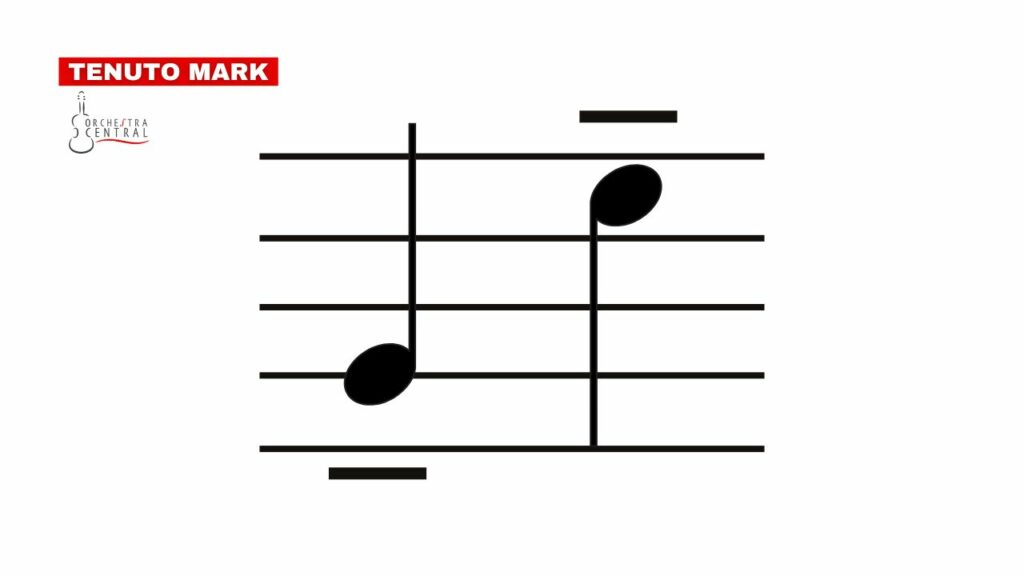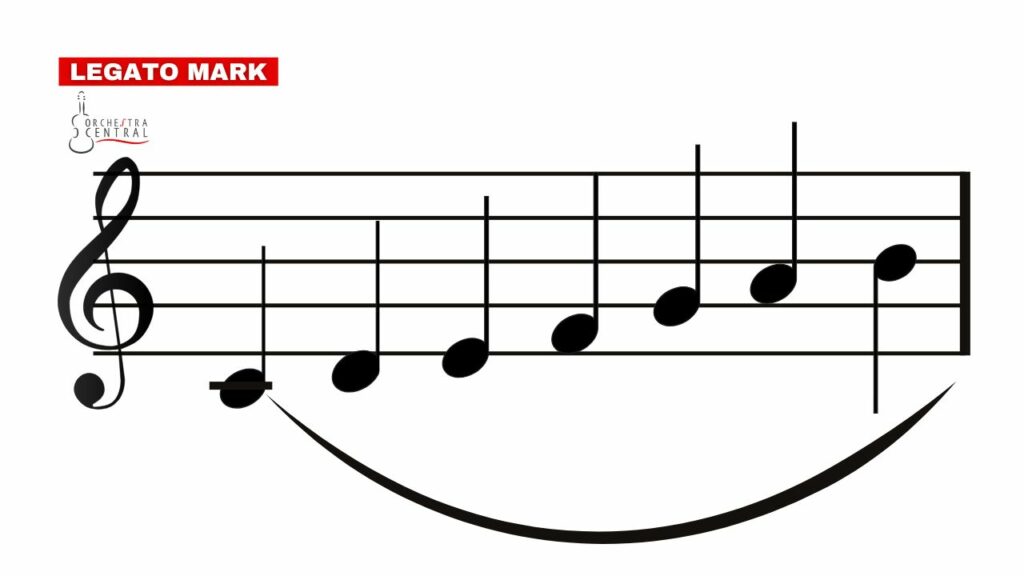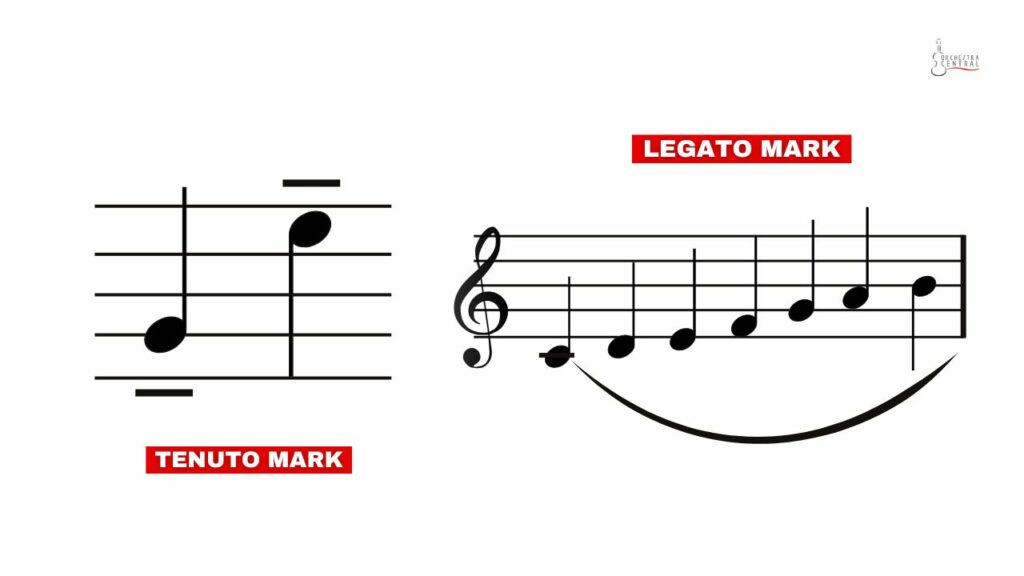Tenuto refers to a visually presented musical notation that directs you to hold and maintain the full or extra duration of a note. In music, elements such as notes, articulations, and voicing play an important role in the outcome of a performance. Consequently, tenuto may direct you to stretch the note or give it a light dynamic accentuation. If you want to learn more about the tenuto definition, its origin, symbol, and meaning in music, you should keep reading!
What Is the Meaning of Tenuto in Music?
The word tenuto (te-nu-to) is derived from Latin tenēre, which means to hold. Hence, tenuto in music is a tempo mark or a musical notation that directs a performer to firmly hold a note or a chord to its full length. Short horizontal lines over a note or chord symbolize the tenuto musical notation.
What Does Tenuto Do to a Note?
As the tenuto definition reveals, tenuto directs you to hold a note for its entire value. Practically, you can use tenuto when you want to hold a musical note beyond its full length or when you want to give it a light dynamic accentuation. On the other hand, heavier dynamic accentuation would be notated by a sforzando or a heavy accent mark. Therefore, holding a note beyond its full length may create a stretching on the note or direct you to play the note a bit louder.
More than one tenuto mark denoted together within a single row directs you to give each note its individual importance without lengthening only one. Tenuto may also be conjugated with other articulations to bring variations to a note. For instance, a combination of a tenuto and a staccato would yield a portato or a mezzo-staccato. The mezzo-staccato directs you to play the note with smooth and pulsing articulation.
How to Identify a Tenuto?

You can identify a tenuto through three distinct notations as described below:
- You may identify tenuto when the music or passage you intend to play has the word “tenuto” printed above it
- You may also identify tenuto when the passage or music you intend to play has the abbreviation ten. printed above it
- Most commonly, you will identify tenuto when you see short horizontal lines place above or below a notehead
What Is a Legato in Music?
A legato or slur is a musical technique that directs you to play smooth and continuous phrases without pausing between subsequent notes. The word “legato” means “tied together” in Italian. Therefore, legato is a music performance technique that directs you to “connect” the individual notes by transitioning without a gap to create a flowing phrase.
Fun Fact: The piano may not produce a true legato without producing an illusion effect. Musicians often use a damp pedal to enhance the resultant illusion effect by depressing the key until they get adequate time for a new tone.
What Does Legato Do to a Note?
Generally, a legato slur introduces a sense of fluidity and tranquility to a phrase. The musical technique is often used in speedy sections of music because it is easier to play faster when the notes slur into each other. Even so, the legato slur has different meanings depending on the instrument at play. Below is a summary of the different slur meanings as per different instruments:
- String instruments: String instruments require you to play the note without picking a single string.
- Bowed instruments: If you use a bowed instrument like a cello or a violin, you will have to play the note in one bow stroke.
- Vocal music: If you are s single, the slur should direct you to sing the notes in a single syllable or a melisma with minimum interruptions from the consonants. This direction means that you may be unable to breathe between subsequent notes.
- Wind instruments: playing the slur with wind instruments like the flute or oboe requires you to play the note without tonguing each note or re-articulating the single notes. You should also integrate exceptional stamina and breath control.
- Wind instruments with slide: In these instruments, you can only play specific note combinations with no tongue without producing a bent note.
- Keyboard instruments: If you are a pianist, a legato directs you to use the pedal or finger legato. This way, you can create a continuous loop before the present note fades away.
Tip: It is important to note that you can expand a slur or a legato over multiple notes and bars. Suppose you come across a composition with a slur that is almost impossible to attain. It simply means that the composer emphasizes the need to play the note with an achievable amount of legato. Due to the differences in the construction of music, tuning, timbre and note ranges, and slur meanings, different instruments will produce varying sounds with legato.
How to Identify a Legato?

You can identify a legato by the following legato symbols:
- A curved line or slur above subsequent notes in serial successions
- A curved line or slur below subsequent notes in serial successions
- In some instances, the word legato above subsequent notes in serial successions
What Is the Difference Between Tenuto and Legato?

Tenuto and legato are musical articulations that direct you on how to vary the emphasis of different notes. Based on their distinct functions, they alter the dynamic, duration, and relation of adjacent notes. In the case of tenuto vs. legato, the elements bear distinct differences.
Below are the major differences between tenuto and legato:
- Symbols: You can identify tenuto by a short horizontal line directly above or below a notehead. On the other hand, you can spot a legato by a curve live above or below a series of subsequent noteheads.
- Meaning: While both words originate from Italian, tenuto directs you to “hold” a note and maintain it for its full value. However, legato, which means “tied together,” directs you to join the notes and play them continuously.
- Effect on a note: In terms of the resultant effect of both elements on the music, tenuto enhances the stretching and articulation of notes. In contrast, tenuto enhances the flow and tranquility of music during performances.
Conclusion
As seen in the tenuto definition, tenuto helps in the articulation of individual notes and chords. Musicians and composers use it to hold a note to its full time value or full note value. On the other hand, a legato mark’s meaning directs you to join subsequent notes under the slur symbol together and play them continuously. Even with the differences, both elements are complementary and produce artistic effects in music.
Interested in learning other music symbols? Check our music tempos and markings guide.
Table of Contents






